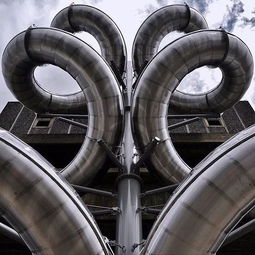您所在的位置:首页 - 科普 - 正文科普
栏杆拍摄技巧
![]() 庆传
2024-05-03
【科普】
1001人已围观
庆传
2024-05-03
【科普】
1001人已围观
摘要```htmlExploringCompositioninRailPhotographybody{font-family:Arial,sans-serif;line-height:1.6;margin
```html
Exploring Composition in Rail Photography
Rail photography is a fascinating niche within the broader realm of photography. It offers unique challenges and opportunities for photographers to capture captivating images. One crucial aspect of rail photography is composition, which plays a significant role in creating visually appealing and engaging photographs.
One common element in rail photography composition is the use of railings. Railings, whether they are part of a bridge, platform, or fence, can add depth, leading lines, and context to your images. Let's delve into some key considerations for utilizing railings effectively in your rail photography compositions:
Railings often provide excellent leading lines that guide the viewer's eye through the photograph. Incorporating railings into your composition can help direct attention towards the main subject, such as a passing train or a scenic landscape. Experiment with different angles and perspectives to make the most of these leading lines.
Use railings to frame your subject and add a sense of depth to your photographs. Positioning the railings strategically in the foreground or along the edges of the frame can create a natural frame that draws attention to the focal point of the image. This technique adds visual interest and helps establish context within the scene.
Changing your perspective can dramatically alter the impact of railings in your compositions. Consider shooting from low angles to emphasize the height and scale of the railings, or experiment with overhead shots to capture unique patterns and textures. Don't be afraid to get creative with your perspective to add variety to your rail photography portfolio.

Railings often exhibit symmetrical patterns that can enhance the aesthetic appeal of your photographs. Look for opportunities to incorporate symmetrical compositions, where railings create balanced and harmonious visuals. Additionally, pay attention to repeating patterns in railings, such as rivets or decorative elements, which can add visual interest to your images.
Finally, use railings to provide context and narrative depth to your rail photography. Railings can serve as visual cues that convey the environment and atmosphere of the railway setting. Whether it's a weathered wooden fence in a rural landscape or a sleek metal railing in an urban station, each railing tells a story that enriches the overall narrative of your photograph.
By incorporating these compositional techniques, you can elevate your rail photography and create captivating images that resonate with viewers. Remember to experiment, explore different perspectives, and pay attention to the unique characteristics of railings in each scene. With practice and creativity, you'll develop a keen eye for composition and produce stunning rail photography compositions.